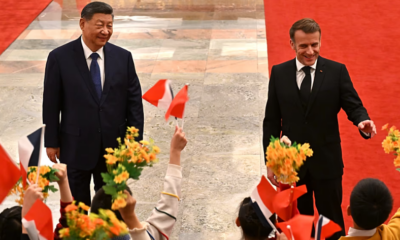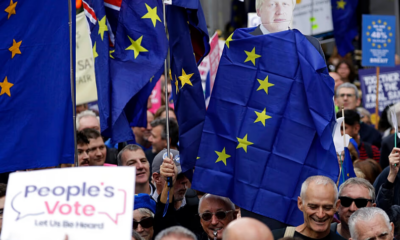Business
Lisbon and Istanbul Among Least Affordable Cities for Rent in Europe, New Report Finds

A new comparative study of salaries and rent across major global cities has revealed sharp contrasts in affordability across Europe, with Lisbon and Istanbul emerging as two of the continent’s least affordable urban centres for renters.
The Mapping the World’s Prices report, cited by Euronews Business, examines net monthly salaries and average rents for one-bedroom apartments in city centres across 69 cities worldwide. Of the 28 European cities analysed, several show striking disparities between income and housing costs.
According to the report, housing remains a significant and growing burden for households across Europe, particularly for low-income earners. In some cities, average monthly wages are no longer sufficient to cover even the most basic urban rental accommodation.
Lisbon, Istanbul Face Affordability Crisis
Lisbon has the highest rent-to-salary ratio in Europe, with the average monthly rent exceeding the average net income. Residents need to spend 116% of their earnings just to cover housing, effectively leaving them in deficit. Istanbul follows closely at 101%, where renters must spend nearly all their income—and sometimes more—on accommodation.
Other cities where renters face severe affordability issues include London, where 75% of the average income is spent on rent, and both Barcelona and Madrid, where that figure stands at 74%. In Rome, the ratio is 65%, and in Dublin, it reaches 62%.
Geneva, Zurich Offer High Incomes and Lower Ratios
At the other end of the spectrum, Swiss cities dominate for affordability when measured against income. Geneva has the lowest rent-to-salary ratio at 29%, with Zurich following at 35%. High salaries in cities such as Luxembourg, Frankfurt, and Vienna also contribute to more favourable ratios, with housing taking up less than 40% of income.
Among the capital cities of Europe’s five largest economies, Berlin is the most affordable relative to salary, with a ratio of 40%. Paris comes next at 45%, while Rome, London, and Madrid rank among the least affordable.
Global Trends Reflect Similar Struggles
Outside Europe, affordability is even more strained in several global cities. Cairo leads with a rent-to-salary ratio of 125%, followed by Bogota at 120% and Mexico City at 118%. New York, the most expensive U.S. city, has a ratio of 81%.
The report also highlights the cities where renters are left with the most disposable income. Geneva tops the list with over €5,000 remaining after rent, followed by Zurich with nearly €4,640. Conversely, residents in Lisbon fall short by €202 monthly, while those in Istanbul are left scrambling to make up a €13 gap.
The findings underscore growing inequality in urban housing markets and intensify calls for stronger policies to address affordability and protect lower-income earners from being priced out of city centres.
Business
Silver Surges Past $60 as Supply Strains, Rate Expectations and Tariff Concerns Drive Rally

Silver prices have surged to levels not seen before, rising above $60 an ounce this week after months of rapid gains driven by tightening supply, shifting Federal Reserve expectations and uncertainty around potential US trade actions. The metal hovered near $62 on Wednesday, extending a rally that began early this year when prices averaged around $30.
The latest jump came ahead of the Federal Reserve’s meeting, where investors expect another cut to the benchmark interest rate. The timing of the central bank’s leadership transition has added another layer of speculation. The US administration is reviewing finalists to replace Jerome Powell as chair, with Kevin Hassett, a senior economic adviser during Donald Trump’s presidency, reported to be the leading contender.
Market analysts say the candidates under consideration favour sharper rate reductions than those overseen by Powell. Since September, the Fed has trimmed rates twice by a quarter point each time. The gentler pace of easing has already pressured returns on cash and fixed-income assets, prompting many investors to shift into precious metals, which typically attract interest when rates fall. Silver, which does not generate yield, becomes more appealing in such an environment. Its performance has even outpaced gold, which has risen about 60 percent this year to reach record highs.
At the same time, traders are monitoring signals from Washington about whether silver could be targeted with tariffs. The metal was added in early November to the US government’s 2025 Critical Minerals List, a classification usually applied to resources seen as essential for national economic security. The designation places silver within the range of potential Section 232 investigations, the mechanism used in past years to justify tariffs on imported steel and aluminium.
Section 232 allows restrictions on imports deemed to put the country at risk through heavy dependence on overseas supply. No investigation has been launched, and officials have not indicated that tariffs are imminent. Still, the possibility has unsettled markets. Any duties on imported silver could reshape trade patterns and raise costs for domestic manufacturers, leading some buyers to boost inventories as a precaution.
Industrial use is also adding upward pressure. Demand from electric vehicle and solar panel manufacturers continues to rise, with these sectors relying on silver for components essential to production. Industrial consumption represents more than half of global silver use, and the combination of tight supply and strong manufacturing needs has intensified the rally.
Analysts say the market remains highly sensitive to signals from the Fed and the White House, with both interest-rate policy and trade decisions poised to shape the direction of prices in the months ahead.
Business
US Allows Nvidia to Sell H200 Chips to Approved Chinese Customers With 25% Surcharge
Business
Gold Looks to 2026 After a Record-Breaking Year Marked by Geopolitical Tension and Strong Central Bank Demand
-

 Entertainment1 year ago
Entertainment1 year agoMeta Acquires Tilda Swinton VR Doc ‘Impulse: Playing With Reality’
-

 Business2 years ago
Business2 years agoSaudi Arabia’s Model for Sustainable Aviation Practices
-

 Business2 years ago
Business2 years agoRecent Developments in Small Business Taxes
-

 Home Improvement1 year ago
Home Improvement1 year agoEffective Drain Cleaning: A Key to a Healthy Plumbing System
-

 Politics2 years ago
Politics2 years agoWho was Ebrahim Raisi and his status in Iranian Politics?
-

 Business1 year ago
Business1 year agoCarrectly: Revolutionizing Car Care in Chicago
-

 Sports1 year ago
Sports1 year agoKeely Hodgkinson Wins Britain’s First Athletics Gold at Paris Olympics in 800m
-

 Business1 year ago
Business1 year agoSaudi Arabia: Foreign Direct Investment Rises by 5.6% in Q1





























